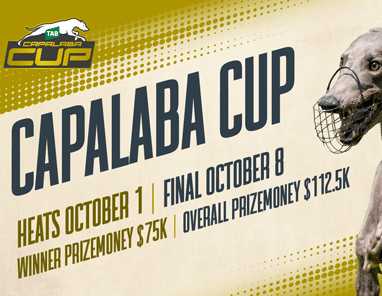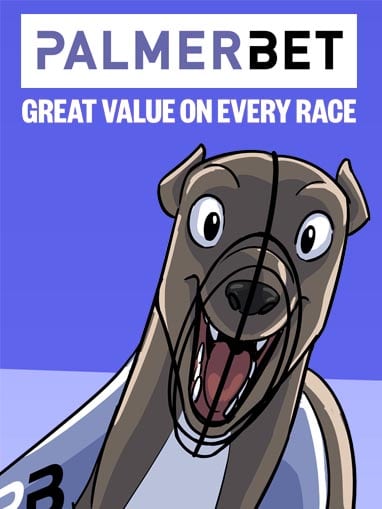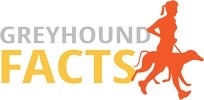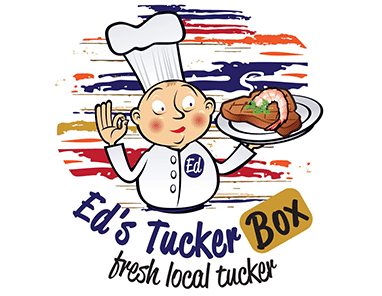
Each Tuesday highly respected former race-caller and greyhound historian PAUL DOLAN presents his ‘Best’ list. Today it is ‘Top 10 NSW tracks that are now a memory’.
If there’s one thing that most of Australia has in common concerning greyhound racing venues it’s the fact that the numbers of tracks has dwindled.
I thought we might be able to come up with a ‘Top Ten’ of former tracks in Australia. But there are many more than ten closed venues that deserve a mention for various reasons. So let’s kick this off by going state to state – and we’ll begin in New South Wales.
These ten former tracks are listed in alphabetical order. In their own way they were part of greyhound racing folklore.
1 – APPIN: Often referred to as Appin Way. Raced from October 6, 1975 to June 22, 2013. A straight track with a grass surface on undulating land with race distances of 274 and 366 metres. The first curator was Syd Shackleton. In 2013 the GBOTA lost its funding for Appin, that money being used for class C TAB races at Wentworth Park. Among the racecallers to describe the action at Appin was the nowadays high profile media man Ray Hadley. On the final day of racing at Appin souvenir handkerchiefs were given away by the GBOTA. The track record for 274 metres was 15.31 to the credit of a bitch named Future Love, trained by Harry Markou at nearby Bargo. That record was set in October, 2012. The outgoing 366 metres record was held by the Julie Fletcher-trained Magnifique at 20.40, set in December, 2008.
2 – ARMIDALE: Here’s a track with a good deal of history. Racing was conducted at Armidale from 1934 to 2018. The track was closed by GRNSW in November, 2018, for remediation works which are yet to take place. An unusual aspect of the Armidale track was that a short section of the back straight crossed a bridge. The grass surface was unaffected at that point of the track. For 365 metres the outgoing track record holder was Odd Sannette at 20.45, trained by Trevor Rice. For 440 metres it was Symptom at 25.06, trained by C. Frankland – Shambler. And for the rarely used distance of 612 metres, which started at the top of the home straight, it was 35.85 to the credit of Cash in Transit, trained by Darren Reardon. Such was the popularity of Armidale’s Saturday afternoon meetings that the day Cash in Transit set the 612 metres record, that was in race 14 on a 15-race card. But like the majority of Saturday afternoon non-TAB venues, they struggled to hold crowds and survive financially.
3 – CESSNOCK : This Hunter Valley venue was the largest greyhound track in the land. It might have been the largest in the world. The circumference was 750 metres, but the longest race was 617 metres. Racing was conducted from 1927 to 2006. Following the track’s closure as a racing venue in 2006 it had been available for trials until 2019. The outgoing 400 metres record was Fiery Daks, a clever name as his sire was Trousers. The time was 22.56, set on April 7, 2006. The 457 metres record when the track closed was 25.42 to the credit of the Jason Thompson-trained Zambora Assassin on May 26, 2006. The race was the group 3 Country Cup. For 617 metres the outgoing record holder was Points, who ran 34.90 on the same day as Zambora Assassin’s 457 metres record run. In 2015 the idea of creating a so-called ‘centre of excellence’ at Cessnock was floated around, with the support of the Cessnock council. But with significant upgrades at Taree and Tamworth recently announced, the chance of a reopening of Cessnock looks remote.
4 – HAROLD PARK: Now here’s a track about which any number of stories and pages have been written. The ‘one turn’ Sydney metropolitan track opened on September 5, 1936. Fields of ten competed on a loam surface over 457 metres (500 yards) and 732 metres (800 yards). The surface was converted to grass in 1948. Many greyhounds chalked up multiple wins at Harold Park. Among them the immortal Zoom Top who won 14 staying races and six sprints there. The Ringer is the winner of the most sprint races, that being 19. Dual NSW greyhound of the year Winifred Bale had 18 sprint wins at the venue. Harold Park closed its gates for the last time on Saturday night, September 19, 1987. Harness racing continued at Harold Park for a further 23 years until its closure on December 17, 2010. The site is now made up of primarily residential apartments, home for around 2,500 people.
5 – LISMORE: Records indicate that racing was conducted on a circular track at Lismore from 1935 until some time in the 1960s when straights were included in a newly designed track. The first Lismore Cup winner was Bonnie Beaver in 1968. The list of Lismore Cup winners includes such stars as Mister Oollee, Tickety Boo, Roanokee, Rapid Journey, Bogie Leigh and Fool’s State. The track has endured any number of floods in its long history. But the devastating floods of February, 2022, battered the track beyond repair and the GBOTA announced that the venue would not be rebuilt. Required standards such as a track six metres or more wide cannot be met.
A man who saw more greyhound racing at Lismore than most of us was retired racecaller Bob Lane. When asked about the best performers he saw at Lismore Bob comes up with the names Pretty Short and Silent Ring.
The outgoing Lismore track record holders are: 420m Fast Times, Tony Brett, 23.52. 520m Grand Prix Dryva, Wayne Wilson, 29.38. 635m That’s Lil Vicki, Dave Irwin 36.76, 722m Nureyev, Ray Murray, 42.36.
6 – MOSS VALE: Another historic venue, situated in the beautiful Southern Highlands area of New South Wales, a short drive from the former Appin straight track. Moss Vale was an almost perfect circle track which raced from 1935 to 2006. Race distances were 307, 503 and 623 metres. The longest serving racecaller there was the larger than life Graham ‘Tonsils’ Tonkin, who labelled Moss Vale as ‘the family track’. Tonkin was famous for his legendary scripts about winning greyhounds and their trainers. He would announce the ‘Meadow Lee’ award, which meant the winner ought to be congratulated. Remember that television commercial? Tonkin organised three invitation race callers meetings at Moss Vale and out of respect for him and the venue, there was always a ‘full house’ of callers. The winner of the last race at Moss Vale was Bachelorette, a bitch owned by Jaime Lloyd. Greyhound racing ceased at Moss Vale mainly due to the club’s landlord, the Show Society, not wanting to renew its lease.
7 – PENRITH: This track at the foot of the Blue Mountains raced for 23 years, from 1976 to June 26, 1999. One of the last feature races appears to be the 1999 Penrith Oaks, won by the John and Julie Finn-trained Poetic Light. The Penrith Derby in 1998 was won by Skipper, trained by Jeanette Cauchi. Strangely, the last race ever run at Penrith was a humble maiden race. It was the last of 12 races that night. The winner was Wiljarra Osti in 31.43, owned by E.Doss.
8 – SINGLETON: This Hunter Valley track raced from June 13, 1960, and closed in the year 2000. Race dates which Singleton held in 2000 were added to other tracks in the area. Facilities at Singleton were pretty basic, but funding could have fixed that. Broadcaster, the late John McDermott, called greyhound racing at Singleton from 1963 until the track’s closure. “Initially my pay was ten shillings or seven dollars a night. But I rarely got home with that amount of money, due to my love of a punt,’’ McDermott stated. “I regard Singleton and Beaumont Park at Newcastle as the tracks I enjoyed calling the most.’’
9 – TWEED HEADS: Greyhound racing commenced at Border Park, Tweed Heads in 1964 and finished there on December 3, 2016. The founding fathers of the 23 acres, $200,000 greyhound and trotting tracks were Harry Pledger, Norm Ahrens and Ray Duncan. Tweed Heads is especially dear to my heart. In 1973 I was keen to have a crack at calling greyhounds, having called some bush horse race meetings for a few months. Tweed manager Harry Pledger invited me to attend a meeting and meet the racecaller Martin Ross. Two non-betting maiden qualifying races were run each Saturday after the main card and that first day Martin suggested I call the qualies. It was a bit of a shock, but I stepped up and seemed to handle them alright. Martin was a keen rugby league fan and had not been to a grand final in Sydney for quite a few years, simply because he couldn’t find a back-up or stand-in caller at Border Park. So he discussed with Harry and chief steward Bill Watkins the possibility of me calling a full meeting the following month, on NRL grand final day, and that was approved. For me it was very much a case of being in the right place at the right time. Harry Pledger’s assistance to me was just typical of the man who was a racing administration legend for over fifty years.
Harry introduced the Border Park Galaxy in 1971, a heat and final series worth $1,000 to the winner. The first winner was King Doolittle, a son of Miller’s Moss trained by Les Hampson.
In 1972 the winner was a bitch trained in Brisbane by Malcolm Purtell whose day job was as a foreman at the Golden Circle Cannery in the Brisbane suburb of Northgate. The bitch’s name was Lass Come Home, owned by Marj and Bill Kinross. Lass Come Home won her heat from box eight and was the only Queensland trained runner in the $1,000 to the winner final run two days later where she again drew alley eight. Bill Kinross didn’t mind a bet and snapped up juicy odds with the bookmakers before the heats were run. In the final Lass Come Home firmed from 10 to 1 to 3 to 1. The favourite from box one was Koombar, a high class Sydney dog. Lass Come Home flew the lids while Koombar was last to jump. The Queenslander, who tipped the scales at a mere 21.8 kg, held on to win by a half head margin over Koombar, who was a giant dog weighing 38.5 kg. At the trophy presentation Bill Kinross thanked ‘the gentlemen with the umbrellas who have given us such great odds each time our bitch has won’.
You could just about write a book on the Tweed Heads Galaxy. The last running of the race was in 2013, won by the Glenda and John Dart trained Pierino. Financial constraints saw the race mothballed. Border Park closed to racing in December, 2016, the site sold to the Gold Coast Airport Corporation. Tweed Heads club chairman Rod Collins and secretary-manager Steve McGrath immediately embarked on a search for suitable land for a new home and land at Chinderah was purchased last year. Chinderah is about twenty kilometres south of what was Border Park.
Ipswich based trainers Lyn and Don Massey won the last race at Border Park, named the Harry Pledger Appreciation Stake. That winner was Magical Yessam from box four. Don Massey, then aged 77, said he used to race greyhounds at Beenleigh when Harry Pledger was running the club there. Pledger died in 2012, aged 93 years and while his beloved Border Park is no longer a racetrack, he left us a lasting legacy.
10 – WYONG: Situated 89 kilomtres north of Sydney and 63 kilometres south of Newcastle, this historic track has conducted the three codes of racing. For greyhounds it operated from 1935 to 1998, on a straight grass track down the outside of the thoroughbreds race track. A moveable and easily reinstalled fence created the perfect position for straight track greyhound racing. Distances were 300 and 366 metres. In 1994 the Dave Irwin trained brilliant sprinter Star Title won a 366 metres event in 19.57. That made Star Title the world’s fastest greyhound, he had covered the 366 metres at a speed of 41.83 miles per hour. That figure of 19.57 was the outgoing Wyong record for 366 metres. Over 300m the outgoing record holder was the Christine Oldfield-trained November Forest who won in 19.12 in 1995. The annual Wyong Derby usually attracted strong representation from Victoria and to a lesser extent Queensland where straight track racing was conducted. In the 1974 Derby the Peter Lewis-trained Bullion scored by a nose. There was a dead heat for second between Capricorn Gem, a Victorian Waterloo Cup winner, and Wiltie’s Charm.
Wyong raced on Saturday afternoons and the demise of greyhound racing there in 1998 can be partly attributed to the introduction of the Sky Racing service into homes. Prior to that Sky was only available at pubs, clubs and racetracks.
A name synonyms with racing at Wyong is John Varley who for fourteen years was the sceretary-manager of greyhounds, harness and thoroughbreds at the venue. His people skills were legendary. He earned the nickname of ‘the moth’, so named because he never went home until the lights went out. Varley retired to Queensland’s Gold Coast in 2000 and passed away three years later. In a tribute John Tapp defined Varley in a simple, precise statement. “From the best of dignitaries, owners and trainers to racecourse staff on the gates, John Varley was a mate,” Tapp said.
As gifted as John Varley was, he couldn’t keep the Wyong Saturday afternoon greyhound racing going. There were just too many hurdles that led to economic nightmares for not only Wyong but many clubs.
IN New South Wales you can add to this list of ten closed tracks quite a few more that have shut their doors. These include Albury, Coonabarabran, Cowra, Forbes, Griffith, Mudgee, Narrabri, Beaumont Park Newcastle, Orange, Queanbeyan and Young.
Sadly, in the state of Queensland it’s possible to find ten tracks which have closed. We will take a look at them in an upcoming ‘Top Ten’.









